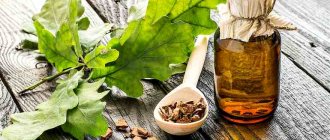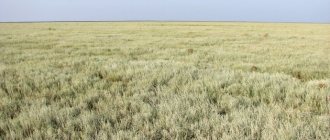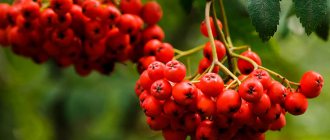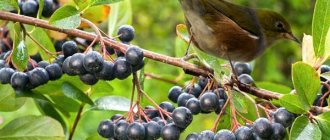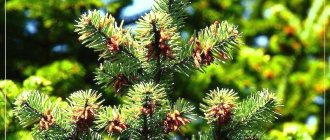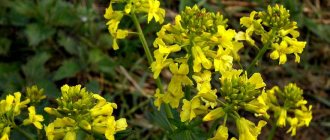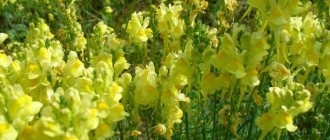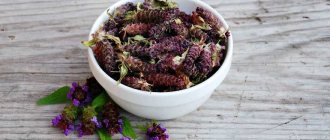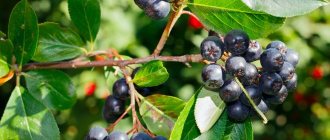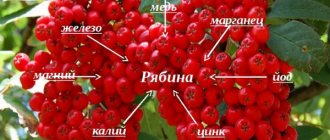Red rowan, the benefits and harms of which have now been fully studied by scientists, because the berry was known to our ancestors long before the cultivation of chokeberry, a plant that is more popular due to its sweet taste, is not only a food product, but also a remedy for colds. Due to the lower concentration of coloring substances, anthocyanins, the fruits are orange in color, so they can be used in the cosmetics industry. A mask with red rowan will not stain the skin of the face at the required exposure time so that it will be difficult to lighten, and in the case of chokeberry, this will require vinegar or citric acid, which are undesirable and even dangerous to use on the dermis. Detailed information about what unique properties the gift of the passing summer, or rather mid-autumn, has, is presented in the text below.
Rowan - family Rosaceae
A brief history of red rowan
The berry was known to our ancestors for many centuries, beliefs were associated with it, legends were formed, more than one Russian song is dedicated to it, the Slavs made amulets from mountain ash. In Rus', it was believed that the plant had a protective effect against dark forces, but there are only legends about how the culture arose and which country is the Motherland at this point in time.
It is known that the berry growing naturally has a bitter taste, which was the reason for hybridization, which began in the 19th century. At the same time, sweet varieties were discovered, and the best scientists in the world sought to solve the problem. An incredible contribution in this direction was made by I.V. Michurin, who crossed the plant with other fruit and berry crops. As a result of the work carried out, the world learned about new varieties with different properties.
What it is
The red rowan plant is, as a rule, trees that belong to the Rosaceae family and are widespread throughout our country. Often grown in parks for decorative purposes, the fruits have a bitter taste, so they are not used fresh, but serve as the basis for culinary dishes.
Red rowan description:
- trees with rounded openwork crowns;
- height – minimum 50 centimeters (northern regions of the Russian Federation), maximum 12 meters;
- crown – width about 5 meters;
- the color of young shoots is grayish-red;
- the texture of the bark is smooth and shiny;
- the color of the bark can range from light brown to yellowish-gray;
- the leaves are arranged alternately;
- the shape of the leaves is complex, ending without a pair;
- each leaf consists of seven to fifteen leaflets with serrated edges;
- the shape of the leaf elements is lanceolate/pointed/elongated;
- leaf color is green, the back side is matte;
- with the arrival of the autumn season, the foliage acquires shades that range in color from yellow to red;
- flowers are collected in inflorescences;
- the diameter of the inflorescences can be up to ten centimeters;
- the flowers consist of five petals;
- corolla color – white;
- multi-stamen flowers;
- number of pistils – 1;
- flowering period - late May - early June;
- the fruits are similar in shape to apples;
- berry color – orange-red;
- fruit size – up to 1 centimeter;
- seeds are located along the edges;
- ripening period - second ten days of August - first September;
- The taste of the berries is bitterish-sour.
Considering the description of the plant, it is difficult not to notice that at least three months pass from flowering to ripening of the berries. During this time, certain chemicals accumulate in them, which determine the effect on the body and the possibility of internal use.
IMPORTANT. The bitter taste is determined by organic acids and the presence of parasorbic acid mono-glycoside, which destructs with the first frost, and the berry becomes suitable for consumption.
Where does red rowan grow?
When asking this question, it is worth considering that this plant is a crop of predominantly temperate climatic conditions, and therefore grows in the following areas:
- European part of the continent;
- Central Asian part;
- Caucasus, central Russia.
In these climatic zones, the plant is most popular; it can be found in almost all regions of our country, even the northern ones, where the maximum height is reduced to half a meter and the appearance of the crop is similar to a bush.
Through selection, varieties have been obtained that differ from their ancestor in the size and taste of fruits, winter hardiness, color of shoots, and shade of berries. Most popular:
- Moravian - heat-loving, does not tolerate frost;
- Mealy;
- Aria - grown for decorative purposes;
- Kashmir - white fruits;
- Sargent – in autumn the foliage turns orange;
- Quene - the main difference is the length of the leaves and their shape (the number of cloves is 33);
- Japanese - the foliage turns white with the beginning of autumn;
- Chinese - leaves turn burgundy in autumn.
The list is not limited to the types described. Each species includes separate varieties, because scientists from various countries around the world are still engaged in breeding.
IMPORTANT. Plants of this type can be not only a decorative decoration of the site, but also a medicine.
Photo of White Rowan
Red rowan: chemical composition
Before moving on to talking about the benefits, it is worth understanding the components in detail, because each element plays a specific biological role.
Rowan: calorie content
The energy value of one hundred grams of fresh fruits is 50.0 kilocalories, which corresponds to 3.2% of the body’s daily needs. A low value of this parameter does not mean that, if desired, you should consume unlimited quantities of berries or products containing them - organic acids, which in this case are present in high quantities, act on the mucous membranes of the gastrointestinal tract in an irritating manner. Of course, given the specific bitter-sour taste, overeating is not very possible, but during a cold, in an effort to quickly recover, you should not abuse it either.
Red rowan: bju
Nutritional value, grams per hundred grams/percentage of the body’s daily needs,%:
- proteins, 1.4/4.5;
- fat, 0.2/0.3;
- carbohydrates, 8.9/6.2;
- dietary fiber, 5.4/27.0;
- water, 81/2.9.
Analyzing the presented data on nutritional value, it is difficult not to notice that the berry consists of 81% water, the remaining 19% comes from other substances, where the majority are carbohydrates, quick sources of energy and dietary fiber, which play a cleansing role. The fact is that fiber, forming a hydrocolloid gel in the intestines, adsorbs harmful compounds - waste and toxins - on its surface, which helps speed up metabolism. For this reason, supporters of proper nutrition and those seeking to lose excess weight should know the answer to the question of how this berry is useful.
Red rowan: vitamin and chemical composition
The fruits ripen for quite a long time when compared with similar crops, due to which the berry accumulates certain biologically significant substances, which are presented below.
Vitamins, macroelements, minerals of red rowan are given in the table:
| Vitamin/mineral | Percentage of daily value, % |
| Beta carotene | 180,0 |
| Retinol acetate, A | 166,2 |
| Thiamine, B1 | 3,3 |
| Riboflavin, B2 | 1,1 |
| Ascorbic, S | 77,8 |
| Tocopherol acetate, E | 9,3 |
| Nicotinic acid, PP | 3,5 |
| Potassium, K | 9,2 |
| Calcium, Ca | 4,2 |
| Magnesium, Mg | 82,8 |
| Phosphorus, P | 2,1 |
| Iron, Fe | 11,1 |
The vitamin and mineral composition, if we compare red rowan with chokeberry, does not differ in a wide variety of elements, but in this case it is worth taking into account the amounts of biologically significant compounds: in one hundred grams there are 1.8 daily norms for beta-carotene, 1.7 for retinol acetate, 0 .8 – for magnesium, 0.8 – for ascorbic acid. Based on these data, it is possible to determine the main effects of the application, which are expressed:
- normalization of the nervous and cardiovascular systems;
- supporting the functioning of the visual organs;
- regulation of metabolic processes;
- stimulation of the immune system;
- support of youth.
Now we’ll tell you in more detail how exactly the vitamins and minerals that are present in red rowan work. The fact is that beta-carotene is the starting compound from which the human body synthesizes vitamin A, a substance that is necessary to maintain youthful and healthy skin and normal functioning of the visual organs in low light conditions. A big plus is that the fruits of the plant are rich in both substances, so regular consumption serves as a preventive measure for further deterioration of vision.
B vitamins, thiamine and riboflavin in combination with the macroelement magnesium normalize the functioning of the nervous and cardiovascular systems, reduce the concentration of harmful cholesterol particles, increase stress resistance, and prevent surges in blood pressure. For this reason, rowan serves as a preventive and therapeutic agent for hypertension, but with hypotension, the opposite effect is possible in the form of loss of consciousness.
Alpha tocopherol acetate is a powerful antioxidant essential for supporting male/female health. Ascorbic acid has an antipyretic, anti-inflammatory effect, and is the starting material for the body’s synthesis of collagen, the reduction of which leads to the appearance of visible signs of aging. For this reason, we can talk about preserving youth.
Since the product contains vitamin C, iron, although in small quantities, is still absorbed, which leads to an increase in the amount of transport protein in the circulatory system that delivers oxygen to cells, hemoglobin.
The chemical composition of red rowan is distinguished by the presence of:
- sugars: glucose, fructose, sucrose, sorbitol;
- ursulic acid (antispasmodic);
- carotenoids;
- organic acids: malic, citric, tartaric, succinic, grape;
- catechins;
- anthocyanins;
- tannins;
- flavonols;
- amino acids: cystine, cysteine, lysine, histidine, arginine, aspartic acid, glycine, alanine, tyrosine.
The bitter note in taste is given by the mono-glycoside of parasorbic acid, which is present in ripe berries, but destructs under the influence of low temperatures. For this reason, it is recommended to collect after early autumn frosts or keep the fruits in the freezer for at least three days.
Natural sugars, especially sorbitol, are most beneficial for those suffering from diabetes: the substances provide a sweet taste without increasing the concentration of glucose in the circulatory system. In addition, the substance has an antibacterial effect and acts as a natural preservative.
Useful properties and contraindications of red rowan
This plant is distributed in almost all regions of Europe. Red rowan, whose medicinal properties and contraindications are interconnected, often does not attract people's attention. It is considered a beautiful tree that has no practical use. Because of this, the medicinal properties of rowan are often underestimated, which is a big mistake. So, the benefits of red rowan are its following qualities:
- Rowan is a natural storehouse of vitamins. It is especially rich in vitamin C, of which there is much more in berries than in lemons. Therefore, for colds, rowan tea will be very useful. In addition, no pharmaceutical product will cure vitamin deficiency the way mountain ash will.
- This plant is also not offended by macroelements. The medicinal properties of rowan also consist in the fact that zinc, manganese, magnesium, copper, and potassium can be found in it. By the way, this plant contains much more iron than apples.
- People with a slow metabolism can eat rowan dishes to speed it up. This also applies to patients who have undergone major operations. The medicinal properties of red rowan fruits saturate the cells and tissues of the body with a large amount of energy necessary to restore the body.
- Red rowan significantly enhances the healing effect of nettle on the body. For anemia, it is useful to use an infusion of these plants.
- If you have problems with blood vessels, use rowan as a medicinal plant.
- Red rowan perfectly stimulates the cardiovascular system. It is difficult to overestimate this property.
- Organs such as the liver and stomach are exposed to harmful factors every day. The healing properties of rowan protect them from negative influences.
- If you have kidney problems, then eat rowan, which has a diuretic effect.
- If necessary, rowan can be used to treat constipation, as it has a slight laxative effect.
- If you have poor blood clotting, then you probably need to know that rowan can stop bleeding from various injuries.
- Berries can also suppress gas formation.
- Rowan slows down the growth of any pathogenic bacteria.
- The medicinal properties of rowan can prevent any fungal diseases, including thrush.
- Rowan bark is also useful, the medicinal properties of which are that the decoction can significantly reduce cholesterol levels in the blood.
- For diabetes mellitus, rowan significantly reduces the risk of all kinds of complications.
- This berry is even used in cosmetology. It promotes skin rejuvenation, smoothing wrinkles and eliminating skin defects.
There are also contraindications to the use of this plant. These include:
- Increased stomach acidity.
- Peptic ulcer disease.
- Early pregnancy.
- Thrombophlebitis and susceptibility to this disease.
- Increased blood clotting.
There are not many contraindications to the use of rowan, but they must be treated with caution. In order for the plant to bring maximum benefits, you need to know how to use it.
Red rowan: beneficial properties
The positive effect on the body is explained by the following characteristics of the product:
- antibacterial – eliminating harmful microflora in the intestines;
- diuretics;
- choleretic;
- immunostimulating – thanks to antioxidant substances, the berry is a powerful remedy for colds;
- cleansing – removal of waste and toxins from the body thanks to pectins;
- laxatives - organic acids serve as a means of combating constipation;
- increasing appetite;
- normalizing – refers to the functioning of the cardiovascular and nervous systems, metabolism, blood pressure, cholesterol/glucose concentration in the circulatory system;
- accelerating metabolism;
- increasing blood circulation;
- improving brain function, the appearance of the epidermis, strands, nails;
- rejuvenating;
- antitumor;
- supporting – relates to the functioning of the visual organs, because the fruits of the plant contain a high amount of beta-carotene and retinol acetate;
- strengthening – capillary walls;
- calming;
- antispasmodic.
Since red rowan combines various groups of chemical compounds with antioxidant effects, regular use prevents early aging, the development of diseases of the cardiovascular system, cancer, and atherosclerosis.
Let's take a closer look at the positive effects on different categories of people.
The benefits of red rowan for women
A pronounced antimicrobial effect helps eliminate fungal infections, but local action is required to suppress harmful microflora on certain parts of the body. To fight thrush, traditional healers recommend douching with decoctions from the bark of the plant. The method, of course, will cost a pretty penny, but it will require time and effort, and now there are inexpensive pharmaceutical products that can eliminate the disease in two or three oral administrations of tablets/capsules. Based on scientific experience and the opinion of doctors, we can say that it is better to save time and not use products whose effects have not been proven by research.
Since everything is clear here: before using any means, you should consult a doctor - let’s move on to the benefits of rowan as a means to improve appearance. In this case, we are talking about both external and internal use, because the chemical composition contains a lot of vitamin A.
IMPORTANT. There is also evidence that eating fresh berries helps improve the well-being of women during menopause.
The berry is not a therapeutic agent, but in some cases it can cause serious harm to the body. Thus, use by pregnant women can lead to miscarriage or early birth, and subsequent allergies in the baby. Nursing mothers should also limit themselves due to the fact that the baby’s fragile body may react to the new product with serious complications.
What are the benefits of red rowan?
Rowan fruits are beneficial for the body because they have anti-inflammatory, choleretic, laxative, diuretic, hemostatic, diaphoretic, antioxidant, bactericidal, and tonic properties. When applied externally, wound healing, hemostatic, antifungal, local irritant and analgesic effects are observed.
For men
The product is used for the prevention and treatment of prostate diseases: prostatitis, adenoma, hyperplasia. Useful for men engaged in heavy physical labor, as it has a positive effect on the state of the cardiovascular system and prevents the appearance of hemorrhoids.
For women
Rowan helps increase hemoglobin and normalize hormonal levels, improves the condition of PMS and menopausal changes, and is used to treat some gynecological diseases. Widely used in home cosmetology to improve hair health, whiten skin, fight inflammation, acne and age-related changes.
For children
Rowan fruits are used for colds as an antibacterial and antitussive agent; they are especially useful for weakened and often ill children. It is better to give berries to children in the form of sweetened tea, compote, jam, and marshmallows. Eating rowan can improve appetite, compensate for vitamin deficiencies, and increase the body's resistance to adverse factors.
For the elderly, athletes and diabetics
For elderly people, rowan is recommended for:
- improved vision;
- normalization of cholesterol concentration;
- regulation of digestion, suppression of excessive formation of intestinal gases, facilitating bowel movements;
- strengthening vascular walls, improving heart function, stabilizing blood pressure;
- increasing immunity.
The low glycemic index and ability to lower blood sugar make the berries useful for diabetes.
The active compounds present in mountain ash improve tissue oxygenation, and the rich vitamin and mineral composition compensates for the lack of relevant compounds and has a positive effect on the functioning of the circulatory and musculoskeletal systems. Therefore, it is useful to introduce such a supplement into the diet of athletes and people leading an active lifestyle.
Tea with rowan for weight loss.
For weight loss
Rowan reduces lipid content in the liver, activates metabolic processes, promotes the elimination of toxins, tones and eliminates constipation. When taken orally, it will help cope with a depressive mood and remove excess fluid from the body. Can also be used externally as part of anti-cellulite wraps.
Medicinal properties of red rowan
When starting a conversation about its use in folk medicine, it is worth saying that at the moment there are no industrial preparations with this plant. Among the products produced by pharmaceutical companies are blueberry dietary supplements, the effectiveness of which has not been proven by research. For this reason, you should not infringe on the benefits of rowan, but you should not count on a therapeutic effect either: this is only an auxiliary or preventive agent, and when diagnosing diseases, only a doctor prescribes treatment methods.
IMPORTANT. Did you know that the fruits of rowan or red rowan are described in the State Pharmacopoeia of the Russian Federation and other countries of the world. The document is of a legislative nature, and the fruits are also sold in pharmacies as a multivitamin.
So, let's talk about the medicinal use of red rowan berries. This is where all the properties are defined:
- antipurulent - a puree-like mass of fresh fruits will come to the rescue;
- against edema - juice diluted twice;
- hemorrhoids, cholecystitis, anemia, gout, asthenia - juice (similar to the decongestant effect, it must be diluted);
- against burns and diseases of the epidermis - external use of puree;
- relieving cold symptoms - teas, decoctions;
- internal bleeding - teas;
- constipation, senile intestinal atony - fresh fruits instead of breakfast;
- hypertension - it is enough to eat a tablespoon daily before meals (half an hour before);
- flatulence - a little fresh;
- elimination of warts – berry pulp, topically;
- headaches - fresh berries before meals.
Due to the pronounced antimicrobial properties of flatulence, improvement occurs within an hour, but for the treatment of diseases of the epidermis, especially those accompanied by bleeding, the leaf part is more suitable, the effect of which will be considered separately.
Application of rowan
Rowan is widely used in various industries. The most popular techniques are discussed in more detail below.
ethnoscience
When using rowan in folk medicine, various diseases in the body are treated:
- elimination of dysentery when eating dry fruits, fresh juice;
- scurvy (rinsing the mouth with a decoction);
- vodka tincture for the treatment of hemorrhoids;
- a decoction of the leaves is used as an effective diuretic, hemostatic, and diaphoretic;
- strengthening the immune system and replenishing the lack of nutrients in the body;
- restoration of the endocrine system;
- treatment of gastrointestinal disorders;
- treatment of kidney and liver disease.
Currently reading: Healing properties of raspberries and features of use
Popular traditional medicine recipes:
- preparing the tincture by mixing 1 tbsp. spoons of berries and 500 ml of cold water. The resulting mixture is brought to a boil and then infused for 1 hour. The finished product is taken 120 ml 4 times a day to prevent the general condition of the body;
- alcohol tincture. 200 grams of berries are poured with 1 liter of vodka and infused for 2 weeks. The finished product is taken 1 teaspoon 3 times a day;
- decoction of rowan flowers. 1 tbsp. pour a glass of boiling water over a spoon, leave for 20 minutes and use as directed;
- fortified tea is a good prophylactic in the treatment of colds and vitamin deficiency. 1 tbsp. rowan berries and rose hips are poured into 500 ml of boiling water and infused in a thermos for 8 hours;
- The juice is used to treat gastritis of low acidity, vitamin deficiency, and cholecystitis. Boil 1 kg of berries in salted water and rub through a sieve. The resulting puree is poured with syrup (200 grams of sugar per 500 ml of water);
- The finished juice is poured into sterilized jars and sealed.
Cooking
Culinary berries are also used in cooking to make jam and puree. The finished product can be used to add to a variety of recipes.
Red rowan: harm, contraindications
If we talk about side effects, then vomiting, diarrhea, dizziness, nausea are possible, the cause of which may be individual intolerance or non-compliance with the recommended amounts per day:
- 50 grams – adults;
- 10-20 grams – children.
No less harm to health can also be caused if you use fruits collected along the highways: they may contain heavy metal ions that are formed when gasoline burns and tires rub against asphalt - lead, cadmium.
IMPORTANT. Despite the fact that the berry grows everywhere in our country, you should be careful about the place of collection and follow the recommended quantities.
Contraindications include the presence of:
- hypotension;
- individual intolerance;
- ulcers, gastritis of the gastrointestinal tract;
- increased blood clotting (thrombophlebitis);
- heart attacks;
- strokes;
- diseases associated with the heart muscle (ischemic disease);
- recovery periods after operations;
- pregnancy (only after consulting a doctor);
- breastfeeding period;
- children under three years of age (inhalation, high acidity).
It's no secret that use leads to a decrease in blood pressure, which is of particular benefit for hypertension, but with hypotension the opposite effect is possible - loss of consciousness, dizziness.
The list of cases when use should be abandoned is not limited to those listed above, therefore, when diagnosing any chronic or acute forms of disease, it is necessary to consult a doctor before introducing it into the diet.
Contraindications for red rowan fruits
As in any case with herbal preparations, one must remember their contraindications. After all, rowan fruits act as an antibiotic, so they have side properties. Although, as a result of drying or cooking, the acid is destroyed, which leads to the loss of antibiotic properties.
You should use rowan-based preparations with caution after the age of 45, since it is at this age that various diseases become more acute.
Contraindications for the use of rowan components:
- stomach ulcer;
- gastritis;
- high blood clotting;
- thrombophlebitis;
- lactation;
- pregnancy.
Even in ancient times, they knew that rowan was used when planning pregnancy as a means to prevent it. Pregnant women should not overuse rowan to avoid allergies in the fetus. When using components based on this plant, you must be careful:
- with hypotension (low blood pressure);
- with a tendency to allergies;
- with increased stomach acidity;
- with coronary heart disease;
- patients who have had a heart attack or stroke.
You should not make preparations from fruits and leaves:
- in a dusty, polluted and gas-filled city;
- on the territories of industrial enterprises;
- near busy highways.
Only the cleanliness of the collection site will ensure that the collected raw materials have those beneficial and healing properties for which this tree is valued.
It is not recommended to eat a lot of fresh rowan fruits, as they contain too much parasorbic acid. In dried or frozen berries, it is destroyed and has a more gentle effect on the body, especially if you prepare rowan recipes in combination with other ingredients.
Rowan: simple recipes
Although the berry grows everywhere, sooner or later the season ends, so housewives often look for quick ways to preserve valuable raw materials until the February frosts. It is worth considering that prolonged cooking leads to the destruction of vitamin substances and, accordingly, loss of benefits.
Rowan compote: recipe
Required:
- fruits/1000 grams;
- sugar/1000 grams;
- water/1000 milliliters.
Step-by-step scheme for preparing compote:
- Separate the collected raw materials from the branches, sort, remove spoiled units, rinse, place in a colander.
- Make syrup from sugar and water. When ready, grains of solid matter should dissolve, which will take up to five minutes.
- Prepare boiling water and immerse the berries in it.
- After five minutes, cool with ice water.
- Immerse the raw materials into jars and pour hot syrup.
- Cover with lids and keep in a dry, dark place for the day.
- Every other day, pasteurize each container for at least half an hour.
Rowan tincture: recipe
The drink has antibacterial properties and can also be used for cosmetic purposes.
Required:
- fruit;
- vodka/alcohol/moonshine.
Step-by-step preparation scheme:
- Clean the raw materials from the branches, rinse, place in a colander, and dry.
- Prepare a container (this could be a jar).
- Fill the container with berries.
- Add alcohol or vodka. The liquid must cover the raw material completely.
- Cover with a lid.
- Place in a dry, cool place protected from sunlight.
- After a day, check: if the berry has absorbed moisture, add alcohol or vodka.
- After two weeks, turn it over and place it upside down.
- Turn the container every two weeks for two months.
- Drain the liquid part, store in a dry, cool place (cellar), protected from direct sunlight.
Rowan: how to store it correctly
The fruiting season of any crop is coming to an end quite quickly, and the human body needs vitamin substances daily, regardless of the time of year, so housewives are often interested in how they can prepare raw materials for future use.
In this case, it is worth knowing that there are the following options for preserving rowan berries:
- freezing;
- jerky;
- drying;
- conservation.
The first method involves collecting bunches of rowan, clearing the branches, washing, and drying. Next, the fruits should be laid out on baking sheets (in one layer), wait until completely frozen, and then packaged in specially designed containers. Failure to comply with this condition may cause an unpleasant odor. The method allows you to preserve the properties of the product throughout the year.
Drying scheme:
- Prepared fruits (1 kilogram) must be filled with boiled water (temperature not lower than 90 degrees/C).
- After 3 minutes, pour cold water and leave for twelve hours.
- Place in a colander.
- As excess moisture drains, immerse in a saucepan and pour a glass of sugar.
- After a day, drain the syrup and add a glass of sugar.
- After a day, drain the syrup.
- Combine the first and second syrups in a saucepan and bring to a boil.
- Immerse the fruits in boiling water and cook for five to seven minutes over very low heat.
- Place in a colander to drain liquid.
- Distribute the mixture on baking sheets.
- Place the baking sheets in the oven. Temperature not higher than 60 degrees/C.
- Dry for half an hour.
- Dry at room temperature.
It is recommended to use glass containers for storage; the shelf life in the refrigerator is one to two months.
The third option can be done:
- in natural conditions;
- using an oven or dryer.
In the first case, red rowan is laid out on baking sheets and placed in a dry, ventilated place inaccessible to light rays; in the second, one of the indicated devices is used. The temperature should not exceed 60 degrees/C - partial destruction of ascorbic acid is possible. Shelf life in sealed containers in a dry place away from light is two years.
Preservation leads to the destruction of valuable substances due to prolonged heat treatment, and the addition of sugar expands the range of contraindications and makes the dish prohibited for patients with diabetes.
The use of rowan in cosmetology
Rowan face masks
The richness of the vitamin composition, namely the high content of vitamin A, indicates its possible use on the epidermis. Organic acids perform a cleansing function, because this group of chemical compounds is often the basis of salon peelings, and flavonoids and tannins effectively fight fungal infections. If your skin is highly sensitive, you should not apply berry puree to the dermis in its pure form: there is a high probability of an allergic reaction. Cosmetologists recommend adding additional components to softened fruits - this will avoid the appearance of rashes, enhance the effect, and expand the range of effects.
Application options for cosmetic purposes:
- masks;
- scrubs;
- lotions;
- wraps.
There are industrial series containing rowan extract: these are usually Belarusian-made cosmetics. The use of high-tech compounds with the right selection can solve existing problems in just two or three applications, but the result disappears as the procedures are completed. The situation with home remedies is somewhat different: here everything is determined by the regularity of use, and the resulting effect lasts quite a long time, in addition, such cosmetics should be used in courses.
Since red rowan can be found everywhere in our country, compositions prepared at home will cost a pretty penny, but will solve problems for a long time. Areas of use:
- hair;
- face;
- body.
For preparation, you should not take utensils made of metal, and you should not use any product more than 2 times a week, the maximum duration of the course is 8 weeks, then a two-week break is required.
Application of red rowan on the face
There are many recipes that are designed for specific types of derms. In general, the effect of the berry is as follows:
- tone alignment;
- rejuvenation;
- nutrition;
- whitening;
- acne elimination;
- hydration.
If possible, you should pay attention to what age and type of epidermis the composition is intended for. Below are universal recipes.
The value of rowan for humans
This year the rowan bushes are again hung with clusters of red berries. The main wealth of the plant is considered to be a large set of useful substances.
The fruits contain useful substances such as: zinc, iodine, magnesium, folic acid, silicon, iron, vitamins E, B, C and A.
It is difficult to list the medicinal properties of this beautiful tree:
- Saves from vitamin deficiency;
- Improves digestion;
- Increases blood clotting;
- Endowed with choleretic and diuretic effects;
- Removes harmful substances from the body;
- Fights pathogenic microbes;
- Strengthens the walls of blood vessels;
- Prevents benign tumors from developing into dangerous formations;
- Reduces blood cholesterol levels;
- Slows down the aging process and deterioration of the body.
Benefits for men
This berry is especially useful for men when detecting prostatitis and congestion in the pelvis. For the male half of mature age, the benefit of red fruits lies in the prevention of dangerous diseases such as heart attack and stroke.
For women
Since ancient times, women have consumed rowan during heavy menstruation. Thanks to the high content of vitamin K, periods became less heavy. If during menopause women eat 30 g of berries per day, hot flashes will decrease.
In ancient times, women drank a decoction from the bark of this tree to protect against unwanted pregnancy. To do this, they drank a cup of this “drug” three times a day. Be careful, it probably doesn't help everyone!
For children
Children over 3 years old can also be given rowanberry jam and compotes. Rowan helps increase the body's defenses, especially during colds.
For those who care about health
Athletes can also take jam, teas, and compotes with this natural product, as they have a restorative and restorative effect. And its properties to regulate metabolism will be useful for those who want to lose weight. In order not to harm your health, you can eat only 100 g of berries per day.
Rowan: reviews
The berry has a fairly high rating, according to average statistics from various services where customers leave their opinions about goods and food products - 5.0 points out of 5.0 possible, which indicates that 100% of satisfied users recommend the plant for medicinal and cosmetic use.
Oksana, 35 years old
For years I did not pay attention to the healing properties of a plant growing near my house, growing it for aesthetic purposes, until a friend told me about the miraculous effects of a red rowan mask with sour cream on the skin. After a month of use, fine wrinkles disappeared, the dermis became tightened. I recommend.
Oleg, 29 years old
This winter I found the best remedy for colds for myself and my child - it turned out to be a decoction of rowan berries that usually fall off after frost. Use for three days during a viral infection weakened the symptoms of the disease. I recommend.
Yulia, 25 years old
For three long years I was looking for the best facial care product. Having tried many industrial series, I switched to homemade ones and the rowan became a real discovery - I applied the paste mixture with sour cream for a few minutes and was very pleased with the result. I recommend.
Brief summary
- Red rowan, the benefits and harms of which determine the insidiousness of the berry, grows everywhere in our country.
- In the northern regions, the height of the plant is much lower - up to half a meter.
- The chemical composition of the plant’s fruits contains a high concentration of magnesium, beta-carotene, and retinol acetate, which determines the normalizing effect on the nervous and cardiovascular systems
- The berries are known to have antimicrobial activity against certain types of bacteria.
- It can be used for cosmetic purposes - as a component of hair and face care products - masks, lotions, rinses.
Growing rowan in a summer cottage
In order to grow a rowan tree at a summer cottage, it is necessary to take into account the recommendations of qualified specialists in this matter, discussed in more detail below.
Requirements for seedlings
List of requirements for rowan seedlings:
- the presence of a well-developed and healthy root system (2 or 3 branches) without signs of damage;
- smooth, not dried bark without a brown tint in the cut;
- preparing the seedling for planting (removal of dead and damaged roots, stems, favorable soil);
- When planting rowan in the fall, it is necessary to tear off all the leaf plates and avoid injury to the buds.
Planting in open ground
Recommendations for planting seedlings in open ground:
- maintaining a distance between seedlings of at least 4–6 meters to ensure convenient tree growth;
- landing pit depth from 0.6 to 0.8 m;
- preparation of soil mixture (5 kg of top soil layer, peat compost, 200 grams of superphosphate, 3 shovels of manure, 100 grams of wood ash);
- pour the mixture into the prepared hole and mix it with plain soil, pour in 10 liters. water;
- the root system of the seedling is dipped into a clay mash, placed in the center of the planting hole and covered with earth;
- The surface of the planting site is well compacted, watered and mulched using sawdust, peat or grass.
Currently reading: The health benefits and harms of gooseberries
